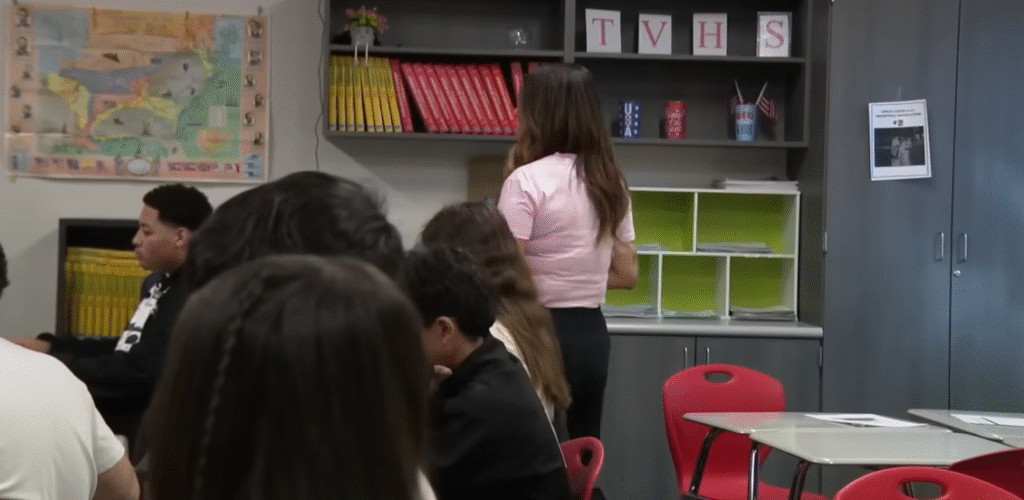One of the most important educational cases of the last ten years is the Arizona School Funding Lawsuit. Judge Dewain Fox has rekindled a decades-old discussion concerning justice, equity, and the constitutional responsibility of legislators by ruling that the state’s school finance system is unconstitutional. His decision highlighted a stark fact: some districts struggle with leaking roofs, malfunctioning HVAC systems, and classrooms that are far below the bare minimum of safety requirements, while others thrive with brand-new performing arts venues and well-kept sports fields.
This situation feels remarkably similar to—yet even more urgent—the Roosevelt v. Bishop case of 1994. The Students FIRST program, which aims to lessen disparities by offering grants for new construction and repairs, was created as a result of that earlier case. However, as lawyer Danny Adelman pointed out, money was progressively taken away until the system once again relied on local property taxes. In actuality, while poorer districts waited in dilapidated buildings, wealthier districts used bonds to upgrade facilities. Education groups and districts filed the lawsuit in 2017 in an attempt to rectify the framework, which had become blatantly unbalanced.
The fact that Arizona schools have reportedly lost between $6 and $7 billion in state funding over the last 25 years makes this case especially noteworthy. The repercussions are painfully real and not merely hypothetical. Teachers report old technology that irritates students, mold growing on the ceilings of classrooms, and basic repairs that have been put off for years. Districts with more affluent tax bases, on the other hand, have modernized surprisingly easily, increasing the disparity in student morale and learning conditions. Fox noted that the constitutional guarantee of a “general and uniform” educational system is broken by this systemic neglect.
Arizona School Funding Lawsuit – Key Information
| Category | Details |
|---|---|
| Case Name | Arizona School Funding Lawsuit |
| Judge | Dewain Fox, Maricopa County Superior Court |
| Plaintiffs | Glendale Elementary District, Arizona School Boards Association, Arizona Education Association, Arizona School Administrators |
| Defendant | State of Arizona Legislature |
| Filed | 2017 |
| Ruling Date | August 2025 |
| Allegations | State failed to adequately fund school facilities, violating constitutional requirement for “general and uniform” education |
| Estimated Loss | $6–7 billion in underfunded facilities over 25 years |
| Current Status | Ruled unconstitutional, Legislature plans appeal |
| Reference | https://azmirror.com/2025/08/14/arizona-is-still-guilty-of-unconstitutional-school-underfunding-court-rules |

Advocates have already praised the ruling as a remarkably successful win for public education. Attorney General Kris Mayes emphasized that the legislature is required by the constitution to take action, calling it a significant victory for educators and students. The political reality, however, dampens the optimism of education advocates: legislative leaders Steve Montenegro and Warren Petersen have pledged to appeal the decision, arguing that it represents judicial overreach into fiscal policy. However, history indicates that appeals might only postpone reform, which is ultimately unavoidable.
This has a wider cultural component as well. Arizona’s lawsuit is part of a nationwide trend of lawsuits to address disparities in school funding, and public education has long been associated with ideas of opportunity and fairness in American society. Similar to how celebrities frequently support causes related to justice or equity, this case highlights a social trend where the opinions of educators, parents, and students are heard outside of courtrooms. Consider the irony of local influencers celebrating multimillion-dollar sports facilities while neighboring districts are struggling to keep their plumbing safe. Public pressure on lawmakers has increased as a result of the outrage that this contrast has generated on social media.
Beyond the current legal and political dispute, the decision presents a particularly creative opportunity to restructure Arizona’s education funding system. The state could create a system that is not only constitutionally sound but also noticeably more efficient and equitable if lawmakers decide to cooperate rather than rebel. Arizona could guarantee that all students, regardless of zip code, learn in a setting that supports their success by making strategic facility reinvestments. In this regard, the decision is not only punitive; rather, it is a chance to forge a more solid basis for coming generations.
This lawsuit also serves as a reminder of the close relationship between social equity and education policy. Students in less affluent neighborhoods are silently denied the same opportunities as their peers when classrooms are not adequately heated or when technology is still antiquated. If this gap is not addressed, it affects economic mobility, workforce preparedness, and even democratic engagement. By addressing these inequalities now, Arizona is essentially making a decision about whether to further entrench inequality or to significantly raise the standard of living for all of its residents.
The decision comes at a critical juncture for policymakers. Education is now a vital tool for competitiveness since economic growth is becoming more and more linked to knowledge-based industries. A state prospers by investing in its schools, much like a business does by investing in talent and infrastructure. Company executives, some of whom have already voiced their opinions, understand that a workforce with insufficient education poses a threat to long-term success. Delays are not only economically shortsighted but also legally risky due to the remarkably clear alignment between economic interests and constitutional obligations.
Although the road ahead will be difficult, history demonstrates that persistent legal pressure frequently forces reform. When educators, lawyers, and activists band together for a common goal, their tenacity works wonders to bring about systemic change. This lawsuit has the potential to prove it once more, as the Roosevelt case did. The evidence of crumbling roofs and dangerous classrooms will continue to be a persistently visible reminder of what is at stake, even though the appeals process may take years.

